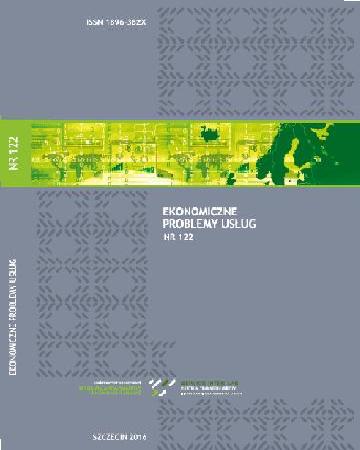
ISSN: 1896-382X
eISSN: 2353-2866
OAI
DOI: 10.18276/epu.2017.127-15



Issue archive /
nr 127 2017
Szczupła rachunkowość zarządcza - zalecany standard czy dedykowane rozwiązanie?
(Lean management accounting- a recommended standard ora dedicated solution?)
| Authors: |
Monika
Łada
AGH Akademia Górniczo-Hutnicza im. Stanisława Staszica w Krakowie Wydział Zarządzania Katedra Ekonomii, Finansów i Zarządzania Środowiskiem Ewelina Grandys-Więckowska AGH Akademia Górniczo-Hutnicza im. Stanisława Staszica w Krakowie Wydział Zarządzania Katedra Ekonomii, Finansów i Zarządzania Środowiskiem |
| Keywords: | accounting management lean accounting management strategy |
| Data publikacji całości: | 2017 |
| Page range: | 9 (163-171) |
| Klasyfikacja JEL: | M41 |
Abstract
The aim of the article is to discuss the field of application of lean management accounting, in comparison to the nature of business strategy. The authors have related their deliberations to three types of strategies corresponding to the key factors of competitive advantage: operational excellence, product leadership and customer intimacy. Based on above factors has been made analysis of management requirements in comparison to information required from the management accounting system. It has been shown that lean management accounting and its calculation methods are best adapted to the contingencies of operational excellence strategy.
Download file
Article file
Bibliography
| 1. | Grandys-Więckowska, E. (2015). Wykorzystanie metod szczupłej rachunkowości zarządczej w działalności logistycznej przedsiębiorstw. Logistyka, 3, 1629-1637. |
| 2. | IMA (1994). Managing Cross-Functional Teams. IMA Publication Number 94295. Montvale, New York |
| 3. | Kaplan, R.S., Norton, D.P. (2000). Having Trouble with Your Strategy? Then Map It. Harvard Business Review, September-October, 51-60. |
| 4. | Kennedy, F.A., Brewer, P.C. (2006). The Lean Enterprise and Traditional Accounting - Is the Honeymoon Over? Journal o/Corporate Accounting and Finance, 17, 63-74 |
| 5. | Łada, M. (2009). Rachunkowość otwartych ksiąg- zarys koncepcji. Zeszyty Teoretyczne Rachun-kowości, 49, 131-143. |
| 6. | Łada, M. (2012). Analiza rentowności strumieni wartości. Prace Naukowe Uniwersytetu Ekono-micznego we Wrocławiu, 252, 312-323. |
| 7. | Łada, M. (2013). Modelowanie docelowych osiągnięć organizacji. Prace Naukowe Uniwersytetu Ekonomicznego we Wrocławiu, 289, 365-372. |
| 8. | Łada, M., Burkat, H. (2015). Marnotrawstwo jako obiekt pomiaru w metodach szczupłej rachunko-wości zarządczej - wyniki badań literaturowych. Studia Ekonomiczne, 245, 123-132. |
| 9. | Maskell, B.H., Baggaley, B. (2004). Practical Lean Accounting: A Proven System for Measuring and Managing the Lean Enterprise. New York: Productivity Press. |
| 10. | Maskell, B.H., Kennedy, F.A. (2007). Why Do We Need Lean Accounting? And How Does It Work? |
| 11. | Journal o/Corporate Accounting & Finance, 18 (3), 59-73. |
| 12. | Otley, D. (2016). The Contingency Theory of Management Accounting and Control: 1980-2014. |
| 13. | Management Accounting Research, 31, s. 45-62. |
| 14. | Porter, M.E. (2008). Competitive Strategy: Techniques for Analyzing Industries and Competitors. |
| 15. | New York: Free Press. |
| 16. | Sobańska, I. (2010). Aspekty rozwoju rachunku kosztów w praktyce. Zeszyty Teoretyczne Rachun-kowości, 56, 207-222. |
| 17. | Sobańska I. (2013), Lean accounting - integralny element lean management. Szczupła rachunko¬wość w zarządzaniu. Warszawa: Wolters Kluwer. |